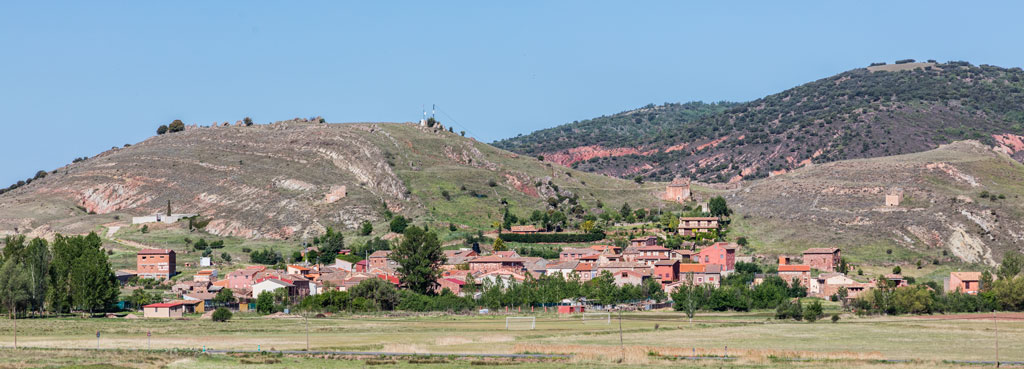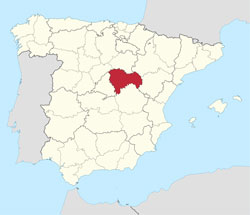Guadalajara in Guadalajara

The province of Guadalajara is in the northernmost part of the autonomous region of Castilla-La Mancha. It borders on the provinces of Segovia, Soria, Zaragoza, Teruel, Cuenca and the community of Madrid.
It lies in the centre of the Iberian Peninsula and its continental Mediterranean climate brings long, hot summers and long, cold winters with spring and autumn being short and sweet,
It is a mountainous region dotted with small villages, 224 (78.8%) of which have less than 200 inhabitants, whereas approximately 35% of the population of 254,308 (2018) live in the capital of the same name, i.e. 84,145 (2017).
The highest point in the province of Guadalajara, and indeed of the whole region of Castilla-La Mancha, is Pico del Lobo at 2,274 m above sea level. Most of the rains that fall in Guadalajara are carried to the Atlantic Ocean by the river Tagus, and to the Mediterranean by the river Ebro.
The capital of Guadalajara lies in the west of the province at a height of 708 m above sea level, high up in the Henares valley on an elevated plateau between two deep ravines. The Henares River runs through the city.
 The climate of the capital is different from the rest of the province due to its elevated situation; the winters are long and cold, the summers short and very hot. The annual average temperature is 13.1°C and the average rainfall is 400l/m2. The city covers an area of 235.51 km2 and has a population density of 355.11/km2 as opposed to 20.90 inhabitants/m2 for the whole province.
The climate of the capital is different from the rest of the province due to its elevated situation; the winters are long and cold, the summers short and very hot. The annual average temperature is 13.1°C and the average rainfall is 400l/m2. The city covers an area of 235.51 km2 and has a population density of 355.11/km2 as opposed to 20.90 inhabitants/m2 for the whole province.
It is thought to have been founded by the Romans, although there is no evidence to support this theory. The first evidence of human settlements is from the 8th century when Andalusians founded the city, naming it Wãdĩ-al-Hajãra, valley of stones. The Andalusians built various monuments in the city, but only the bridge over the river Henares and the now ruined Alcázar (palace) still stand.
Guadalajara was conquered from the Andalusians by King Alfonso VI of Leon and Castile in 1085 and it stayed in Christian hands from then on, being granted special privileges which allowed it to develop its economy by protecting merchants and allowing markets.
The city of Guadalajara had its ups and downs over the centuries and saw much action during the Spanish Civil War. The vast majority if its historical buildings and monuments were ruined, and the rebuilding of the city went slowly for a couple of decades after the end of the war.
However, in 1959, Guadalajara’s fortunes changed when the central government decided to unclog Madrid’s vastly over-crowded industrial estates. The plan (known as El Plan de Descongestión Industrial de Madrid en Castilla-La Mancha) moved much of the industry and its concomitant housing to the periphery, which meant that Guadalajara capital, situated close to the border with Madrid, benefitted from new investments and jobs. This turned Guadalajara into one of the Spanish cities with the greatest relative economic and population growth.
However, not all the plans for the expansion of the city have succeeded. An ambitious project to build a whole city around the AVE (Spanish fast train) station and increase the population by 30,000 inhabitants, failed miserably when the construction company in charge went bankrupt and only a small fraction of the new dwellings was taken. Today, only some 60 passengers get on the AVE at Guadalajara station.
Nonetheless, the expansion of the city over the last 50 years and its proximity to Madrid has changed Guadalajara’s economy from relying on commerce and administration to being largely dependent on industry.


